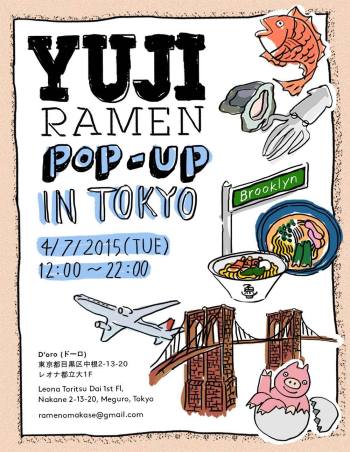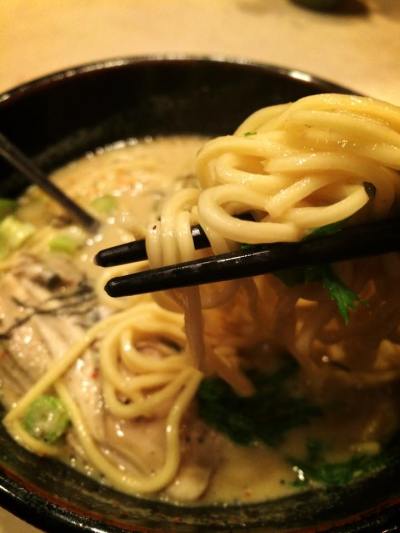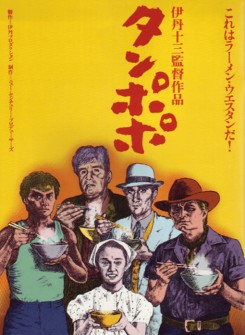by Gary Meyer
There is no question that the most delicious peaches I have ever tasted come from the Masumoto Family Farm. The first time was after a meal at Chez Panisse. Why are their peaches so much better than any others?
 I think that family love and a passion for your work have a lot to do with it. In the new movie Changing Season: On the Masumoto Family Farm, showing twice this weekend at CAAMFest, we experience how the Masumoto family works together to grow the best peaches they can.
I think that family love and a passion for your work have a lot to do with it. In the new movie Changing Season: On the Masumoto Family Farm, showing twice this weekend at CAAMFest, we experience how the Masumoto family works together to grow the best peaches they can.
 The Masumoto and Sugimoto families emigrated from Japan to Fresno in the early 1900s. During World War II, the families were held at the Gila River Relocation Center in the Arizona desert, where Joe Takashi Masumoto married Carole Yukino Sugimoto. After being released from the camp, they moved back to the Central Valley, and against Carole’s wishes, Joe bought 40 acres of grapes and stone fruits. But they went on to purchase more land, and soon planted their first Sun Crest peaches—later to become an award-winning specialty of the Farm—in 1968.
The Masumoto and Sugimoto families emigrated from Japan to Fresno in the early 1900s. During World War II, the families were held at the Gila River Relocation Center in the Arizona desert, where Joe Takashi Masumoto married Carole Yukino Sugimoto. After being released from the camp, they moved back to the Central Valley, and against Carole’s wishes, Joe bought 40 acres of grapes and stone fruits. But they went on to purchase more land, and soon planted their first Sun Crest peaches—later to become an award-winning specialty of the Farm—in 1968.
Their son David “Mas” Masumoto ran away from the farm to UC Berkeley, traveled to Japan to work on his grandparents’ rice farm, and then got a Masters in Community Development at UC Davis, where he also met Marcy Thieleke, who grew up on a goat farm. They married and bought 40 acres from his father. Life wasn’t easy. The year their daughter Nikiko was born, 1985, was one of the worst years for the farm, with prices for peaches being very low. Frustrated but not discouraged, Mas decided to start farming organically, and was certified in 1987.
They started selling their best peaches to Chez Panisse in 1993, and as the word spread, they created the Masumoto Family Farm label.
 In 2007, daughter Nikiko became seriously interested in the farm and started to work there, quickly falling in love with the process and the history of the place.
In 2007, daughter Nikiko became seriously interested in the farm and started to work there, quickly falling in love with the process and the history of the place.
In the film, Mas explains that his father did not teach him all that he knows but he is handing the knowledge down to his children. We join father and daughter as Nikiko learns about preparing the orchards, the water table’s future impact on the farm, and how to fix mistakes in the orchard.
Mas clearly is happy that Nikiko has committed to being a part of the business’ future, but in an unexpected moment, without losing a beat, he reveals to her that he may have a heart problem. It is a shocker for her and us, the way he just drops this bomb, adding that he plans to work as long as he can.
 A surprise 60th birthday party brings out the best in Mas. In a touching scene, he has a great time and is encouraged by all of the support of family and friends.
A surprise 60th birthday party brings out the best in Mas. In a touching scene, he has a great time and is encouraged by all of the support of family and friends.
A triple bypass is successful, but it results in Mas thinking about his own mortality while philosophically knowing that the trees and their fruit will continue long after he is gone.
As Nikiko’s importance at the Farm increases, so does her part of the film’s story. She incisively talks about her family’s time in the internment camps during World War II and these thoughts about discrimination are intercut with what it is like for her to be queer in the Central Valley, where taunts aimed at she and her partner are a reminder that we live in a bubble in the Bay Area and her decision to live and work there is a brave one.
 The strong family dynamic Mas and Marcy create helps us understand the roles they have set for their children. It is brought home with visits from their son Korio and their “obaasan” (grandmother).
The strong family dynamic Mas and Marcy create helps us understand the roles they have set for their children. It is brought home with visits from their son Korio and their “obaasan” (grandmother).
“How many harvests do you have in you?” is the question asked about the Masumoto Family Farm. As both a viewer of the film and fan of their peaches, I feel confident that the answer is: “Many.”

 Not so long ago, the mention of ramen meant those plastic packets of dried noodles that college students put in boiling water for an MSG-enhanced late-night snack. In 1985, Jûzô Itami directed the surprise comedy hit Tampopo , about love and food at a Japanese noodle shop, sometimes promoted as the first “ramen western.” Noodle shops in San Francisco’s Japantown were suddenly packed.
Not so long ago, the mention of ramen meant those plastic packets of dried noodles that college students put in boiling water for an MSG-enhanced late-night snack. In 1985, Jûzô Itami directed the surprise comedy hit Tampopo , about love and food at a Japanese noodle shop, sometimes promoted as the first “ramen western.” Noodle shops in San Francisco’s Japantown were suddenly packed.
In recent years there has been a “Ramen Renaissance,” with new interpretations of the noodle dish a hot trend for adventures in eating.
A sneak preview of the upcoming television series created and hosted by Danielle Chang, Lucky Chow, is the Sunday closing night attraction of this year’s CAAMFest where the audience will get a special look at three episodes.
Chang grew up on the Peninsula. She has described her upbringing as being part of “a traditional Asian family where food is not just a part of life, it’s the very foundation of its culture.”
 After success in fashion, publishing, creative advertising, finance and also as an art curator and professor of art history, Chang created the national food festival LUCKYRICE in 2009. Each year, renowned and emerging chefs work together in five cities (including San Francisco) to create special meals that explore Asian food culture in America.
After success in fashion, publishing, creative advertising, finance and also as an art curator and professor of art history, Chang created the national food festival LUCKYRICE in 2009. Each year, renowned and emerging chefs work together in five cities (including San Francisco) to create special meals that explore Asian food culture in America.
Always looking for new horizons, Chang decided that a TV series could bring stories of Asian food in America to a broader audience.
 The first program on Sunday’s bill, “Ramen Mania,” explores the new world of Ramen.
The first program on Sunday’s bill, “Ramen Mania,” explores the new world of Ramen.
We are introduced to this challenging food by Chef Shigetoshi Nakamura of Sun Noodles. He explains the five building blocks for a great bowl of ramen:
He shows us that there are a wide variety of options in each of these categories, and demonstrates some of the many ways ramen can be cooked, from being boiled in a pot to sautéed n a wok.
Onetime seafood seller Yuji Haraguchi is visited at Yuji Ramen in a Whole Foods food court in New York.
Haraguchi gets bones from the butcher downstairs for some of his broths, and often uses sustainable but discarded seafood from the market. The broth from mussels are a favorite, making surprises like Oyster Chowder Ramen.
Haraguchi takes us through the steps of making his broth, while telling Chang how he came to his process. Then he makes her some special ramen dishes.
He also features a broth-less ramen dish, “mazemen,” using a flat, thick and chewy noodle made by Sun Noodle. Examples include a breakfast Bacon & Poached Egg ramen topped with kale strips and bonito flakes, or with smoked salmon, Camembert and lemon.
 The creative chef explains, “I am looking for culinary collisions. I get ideas from the deli, the diner and the pizzeria.”
The creative chef explains, “I am looking for culinary collisions. I get ideas from the deli, the diner and the pizzeria.”
The Whole Foods location is closed and Haraguchi has become a partner in a full-service restaurant in Brooklyn, Okonomibk, but he also returns to his roots with pop-ups.
Long Islander Ivan Orkin, trained at the Culinary Institute of America, worked at Mesa Grill and Lutèce and then went to Tokyo in 2007 to open Ivan Ramen.
“I knew I would probably get a lot of attention because I am a white guy making ramen in Tokyo which is kind of a goof.” Orkin’s story of how he got his first review in Tokyo is hilarious.
Against all odds Ivan Ramen became a sensation.
 But he wanted to return to New York and be even more adventurous. He has opened two Ivan Ramen locations including one called “the slurp shop” inspired by the way they eat Ramen in Tokyo.
But he wanted to return to New York and be even more adventurous. He has opened two Ivan Ramen locations including one called “the slurp shop” inspired by the way they eat Ramen in Tokyo.
He talks about his philosophy in making Ramen. It is not just soup noodles but a dish that is balanced, composed and harmonious. The toppings used result in something that comes together in your mouth when you slurp it. And he always sticks to his recipes because he wants the results to be consistent for his customers.
He shows us a most unexpected use of monterey jack, mozzarella and feta cheeses plus fish powder, parmesan, pickled bean sprouts and dashi over his own version of mazemen noodles. Then Orkin demonstrates the proper way to eat ramen.
 The show ends up looking for “California ramen.” Three Chez Panisse alumni have opened the Ramen Shop in Oakland. Chang is taken on a shopping trip to the Saturday Berkeley Farmer’s Market to gather ingredients for the daily changing selection of ramen.
The show ends up looking for “California ramen.” Three Chez Panisse alumni have opened the Ramen Shop in Oakland. Chang is taken on a shopping trip to the Saturday Berkeley Farmer’s Market to gather ingredients for the daily changing selection of ramen.
The bounty of fresh produce results in some unusual but wonderful-sounding combinations. Persimmons and Asian pears are blended into a puree that is put into a miso with soy, egg, chrysanthemum greens, King Richard leeks, chili paste and smoked black cod on top. “The fresh fruit helps balance some of the salty flavors,” explains chef Jerry “JJ” Jaksich.

“A California ramen restaurant has to have a vegetarian option, rare in the world of ramen purveyors” explains co-chef Rayneil de Guzman. He prepares one with sake, soy, Meyer lemon zest and juice to create a delicate but rich broth. Then tomatoes and chanterelle mushrooms are added to the broth and noodles.
Ramen Shop is the only restaurant on the West Coast that makes its own ramen noodles, and it has a serious beer and wine program to round out the experience.

Veggie shoyu, meyer lemon ramen with salt-cured egg, shiitake and king oyster mushrooms, kabocha nimono, roasted cauliflower, purple cabbage and watercress. Credit: Rachel Khong, Lucky Peach.
Sunday’s program includes two episodes that were unavailable for advance screening, “Koreatown U.S.A” takes the viewer to Los Angeles, where chef Sang Toon explains the basics of Korean cooking. In New York, Top Chef winner Kristen Kish, a Korean-born adoptee, has her first Korean cooking lesson, learning how to make kimchi. Finally we visit Pocha 32, modeled after Korea’s late-night tent restaurants.
Rounding out the night is “Northern Thai Cuisine.” A Portland carpenter-turned-chef joins Saipin Chutima, chef/owner of the wonderful Lotus of Siam in Las Vegas, to co-create a spicy Issan dish. There is also a visit to a Thai Temple in Los Angeles.
Danielle Chang is a perfect guide through these worlds of taste. We only wish we could be there with her to sample everything. Being our guide is fun for her but frustrating for us. Luckily, we can try some of her destinations locally and while traveling.
In an interview, Lucky Chow’s Chang told Mochi magazine, “Food is a great way to learn about cultures, people, history, sociology, science, psychology—all through the lens of food.”
She has brought her lens, with the help of director Bruce Seidel, to teach us about all those things in Lucky Chow. We look forward to seeing the entire series.
 This is the second part of Gary Meyer’s look at Asian food on the big screen at CAAMFest. Click here to read the first part.
This is the second part of Gary Meyer’s look at Asian food on the big screen at CAAMFest. Click here to read the first part.
Changing Season: On the Masumoto Family Farm world premieres at CAAMFest on March 20, 2015 at 7pm at the Oakland Museum of California, and is preceded by CAAMFest at OMCA’s Off the Grid at 5pm. Following the screening, the Masumotos will engage in a conversation with the audience.
A second screening has been added on Saturday, March 21 at 7pm at the New Parkway Theatre in Oakland.
Danielle Chang will appear at the screening of Lucky Chow on Sunday, March 22, 7pm at the New Parkway, which is followed by a closing night party.
The New Parkway’s chef, Charles “Ray” Henderson, has quite a lineup of intriguing foods to offer during the CAAMFest weekend there. Take a look at his video and menu.
Try the Masumoto French Peach Cobbler recipe from The Perfect Peach.
Mas Masumoto has written memoirs, essays and cookbooks available at your local bookstore or through our links with Amazon or Indiebound.
Ramen
Sun Noodles are the foundation for this Beef Ramen Noodle Soup with Choy Sum and Enoki Mushrooms.
Chef Yuji Haraguchi’s step-by-step ramen pasta-making process.
Watch Chef Ivan Orkin take you through the eight steps to perfect ramen (it starts out in Japanese, but includes English when needed).
His book Ivan Ramen: Love, Obsession, and Recipes from Tokyo’s Most Unlikely Noodle Joint is available at local bookstores or through Indiebound or Amazon.
Tampopo
Because of rights issues, the movie has long been unavailable in the U.S. (though check your library or local video stores like San Francisco’s Le Video and Lost Weekend or Video Room in Oakland). A new distribution deal is rumored to be close, so let’s think good thoughts.






